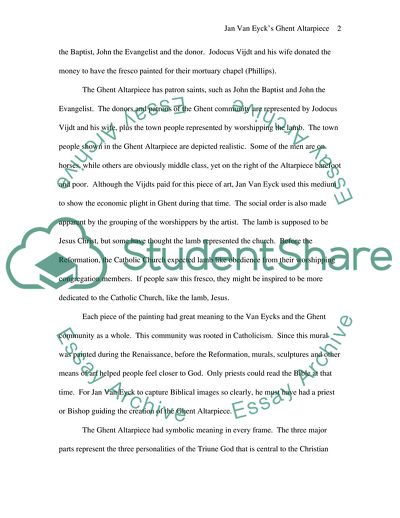Cite this document
(Jan Van Eyck's Ghent Altarpiece Assignment Example | Topics and Well Written Essays - 2000 words, n.d.)
Jan Van Eyck's Ghent Altarpiece Assignment Example | Topics and Well Written Essays - 2000 words. https://studentshare.org/culture/1703558-analyze-jan-van-eycks-ghent-alterpiece
Jan Van Eyck's Ghent Altarpiece Assignment Example | Topics and Well Written Essays - 2000 words. https://studentshare.org/culture/1703558-analyze-jan-van-eycks-ghent-alterpiece
(Jan Van Eyck'S Ghent Altarpiece Assignment Example | Topics and Well Written Essays - 2000 Words)
Jan Van Eyck'S Ghent Altarpiece Assignment Example | Topics and Well Written Essays - 2000 Words. https://studentshare.org/culture/1703558-analyze-jan-van-eycks-ghent-alterpiece.
Jan Van Eyck'S Ghent Altarpiece Assignment Example | Topics and Well Written Essays - 2000 Words. https://studentshare.org/culture/1703558-analyze-jan-van-eycks-ghent-alterpiece.
“Jan Van Eyck'S Ghent Altarpiece Assignment Example | Topics and Well Written Essays - 2000 Words”. https://studentshare.org/culture/1703558-analyze-jan-van-eycks-ghent-alterpiece.


